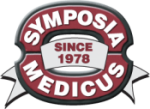Purpose
The purpose of Symposia Medicus is to develop and produce innovative, multi-disciplinary, evidence-based and clinically relevant educational activities, free of commercial bias, which enhances the knowledge of health care provider attendees, resulting in improved clinical competence. We place our educational activities in locations where learners can combine education with relaxation which, we believe, enhances learning.
Content Areas
Symposia Medicus provides approximately 35 educational activities annually. The activities span the spectrum of clinical medicine, nursing, and research. Content is derived for each activity based on extensive gap analyses, as well as all needs assessment data gathered from past participant stated needs, expert medical and nursing professionals, and various other sources. Our CE Program of Activities include evidence-based content relating to disease processes recognition and management, public health issues, research findings or research methodologies, and changes in health care delivery systems and/or technologies. Activity topics also address clinical medical and nursing practice guidelines, factors for the improvement of patient quality of life and safety considerations, cultural and linguistic diversity, and avoidance of liability issues.
Medical and nursing faculty members selected for the educational activities are primarily from academic and clinical institutions. Faculty who participate in Symposia Medicus activities are mandated by speaker contracts to disclose any real or apparent commercial bias and/or affiliation that may have a direct bearing on the subject matter of their presentation(s); any part of their content that includes ongoing research; and, any recommendations for off-label use of FDA approved pharmaceuticals or medical equipment.
Target Audience
The continuing education efforts of Symposia Medicus are directed toward healthcare providers throughout the United States with the majority of participants from states other than California. The nature of modern medical and nursing practice is interdisciplinary and the Symposia Medicus target audience includes physicians, physicians-in-training, certified nurse midwives, nurse practitioners, nurses, physician assistants, and other allied health professionals. Our target audience is comprised primarily of healthcare providers in Obstetrics & Gynecology, Women’s Health, Pediatrics, Emergency Care, Primary Care, and Hospital Medicine; however, other medical specialty areas are targeted from time to time.
Each activity is designed for and promoted to a specific medical specialty within our target audience. We identify the needs of that target audience and set educational objectives for the activity based on the identified needs. We link the needs and objectives with the planning process, delivery and evaluation of each activity. This process is used for all activities in the Symposia Medicus Program of CE.
Type of Activities
All Symposia Medicus’ activities are live and range in length from one-day review courses to multiple-day conferences, with the majority of activities being four days in length. Small group and/or individualized clinical training can be offered in subject areas pertinent to our purpose and target audience. The educational formats used in activities include didactic lectures, case presentations, faculty/audience panel discussions, demonstrations, workshops or other concurrent sessions, and round table or other small group discussions. In order to foster interaction between the educators and the learners, question and answer sessions are an integral part of these live activities.
Expected Results
Symposia Medicus is committed to assessing the impact and effectiveness of its Program of CE activities with the goal of improving healthcare nationwide. Symposia Medicus uses numerous methods to evaluate the extent to which our activities result in learners’ enhanced knowledge and improved clinical competence. All activities are evaluated from the perspectives of the Board of Trustees, Nurse planners, Staff planners, the activity chair(s) and faculty and most importantly, the learners of the CE activities.
Each continuing education activity is considered a success if at least 95% of the learners who respond to the Overall Activity Evaluation (approximately 75-80% response rate) score the activity Excellent-Good. In addition, an activity is considered successful if at least 95% of the attendees who respond to the Overall Activity Evaluation score their educational expectations as having been Completely-Mostly achieved, as well as the learning objectives, as stated in the brochure and again on the evaluation form, as having been met “Completely-Mostly”.
A Commitment to Change (CTC) Outcomes Measurement method is also used for measuring each learner’s enhanced knowledge and improved clinical competence. If barriers to change are found, they are analyzed to determine how future activities can address the barriers. This CTC system is used in all activities with a goal of 80% response return. Of the 80% return, a goal of 65% of those followed up shall state that they gained new knowledge which improved clinical competence as a direct result of what was learned at the Symposia Medicus activity.
Statistical analysis of all evaluative data is accomplished with results of the data used to determine if learner knowledge was gained, activity objectives were met, and all other details associated with activity (location, format, etc.) were satisfactory. Data are used to continually improve our Program of CE activities.
